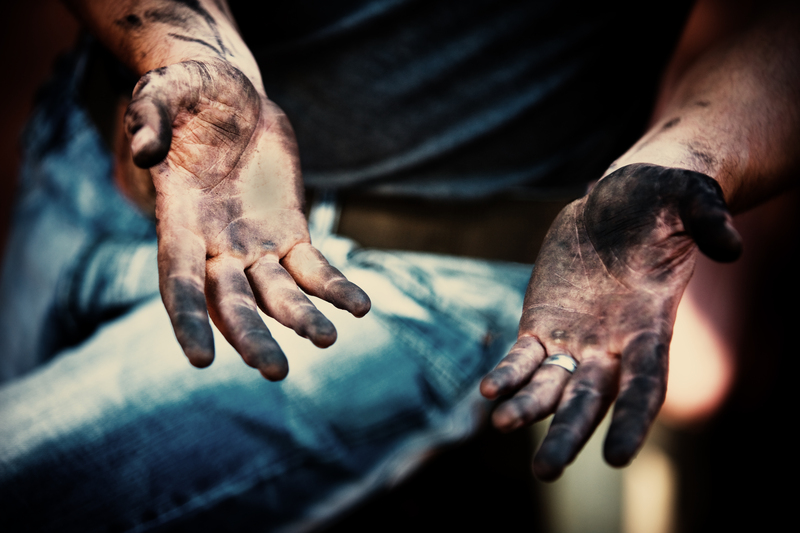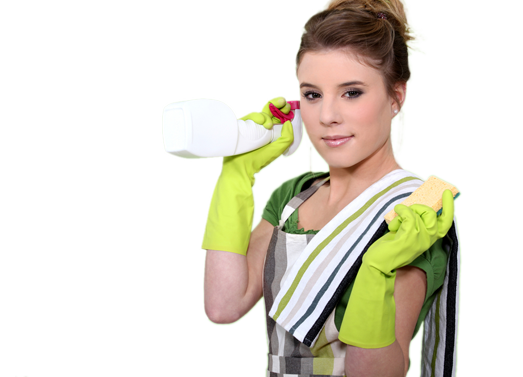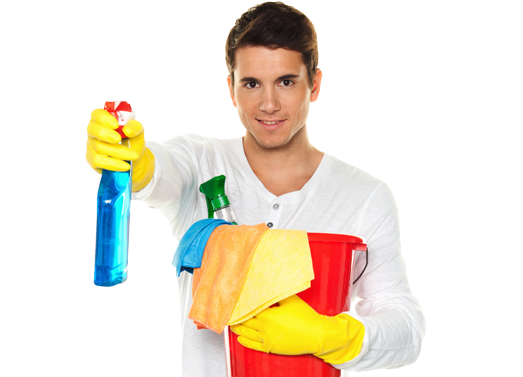Discover How to Keep Your Bathroom Permanently Mold-Free
Posted on 22/06/2025
Discover How to Keep Your Bathroom Permanently Mold-Free
Are you tired of perpetually battling bathroom mold? Bathroom mold is more than just an unsightly nuisance--it can have detrimental effects on your health and damage your home. Creating a space that is permanently mold-free may seem like a tall order, but with the right strategies and consistent maintenance, you can say goodbye to mold for good. In this comprehensive guide, we'll reveal actionable tips, preventative measures, and expert insights to help you keep your bathroom mold-free--not just for a week, but forever.
Understanding the Root Causes of Bathroom Mold
Before exploring practical solutions, it's vital to understand why bathroom mold is so persistent. Mold is a form of fungus that thrives in damp, humid environments with limited airflow. Bathrooms are especially susceptible because:
- They're frequently wet from showers, baths, and sinks.
- Poor ventilation often traps humidity.
- Water leaks and spills can go unnoticed behind fixtures and walls.
- Mold spores can multiply rapidly in moist, dark conditions.
Knowing these factors is the first step toward achieving a mold-resistant bathroom.
Common Types of Bathroom Mold
- Aspergillus: Often appears on damp shower walls and grout.
- Cladosporium: Tends to show up on bathroom ceilings or tile grout.
- Stachybotrys Chartarum ("Black Mold"): The most feared, toxic mold usually found in areas with standing leaks.

How to Keep Your Bathroom Permanently Mold-Free: The Ultimate Guide
It only takes 24-48 hours for mold to develop in damp conditions. Therefore, maintaining a permanently mold-free bathroom demands a proactive, multifaceted approach. Here's how you can achieve it:
1. Optimize Bathroom Ventilation
Proper airflow is your best defense against mold. Bathrooms must be able to quickly dry out after each use.
- Install a Powerful Exhaust Fan: Choose a fan rated for your bathroom size. Run it during and for at least 20 minutes after showers or baths.
- Open Windows and Doors: Whenever possible, leave a window open or keep the bathroom door slightly ajar.
- Consider a Dehumidifier: Especially for bathrooms without windows, a small dehumidifier can help keep humidity below 50%.
Tip: Clean your exhaust fan regularly to keep it running efficiently.
2. Waterproof Surfaces and Seal Gaps
Eyes may not see micro gaps, but mold spores definitely will. Water can seep between tiles, behind sinks, and around tubs, promoting hidden mold growth.
- Use Mold-Resistant Caulk: Regularly inspect caulking and sealant around tubs, showers, and sinks. Remove and replace any cracked or discolored sections.
- Seal Grout Lines: Apply a penetrating grout sealer every six months to protect tile joints.
- Fix Leaks Promptly: Never ignore small leaks under the sink, behind the toilet, or around the tub. A single drip can lead to a large mold problem.
3. Clean Smart and Clean Regularly
Routine cleaning is crucial to prevent mold from gaining a foothold.
- Wipe Down Wet Surfaces Daily: Use a squeegee on shower walls, floors, and glass doors after each use.
- Weekly Deep Cleaning: Employ mold-killing solutions like hydrogen peroxide, vinegar, or specialized bathroom cleaners. Scrub grout lines, corners, and behind fixtures.
- Don't Forget Shower Curtains and Liners: Wash or replace them regularly, as they are prime locations for mold.
- Declutter Your Bathroom: Minimize shampoos, sponges, and bottles that sit in wet areas.
Pro tip: Quick daily maintenance is more effective (and less work) than sporadic deep cleans.
4. Control Humidity and Condensation
Bathroom humidity is a key factor in mold growth.
- Monitor Humidity Levels: Use a hygrometer and keep levels below 50%.
- Insulate Pipes: Prevent condensation on plumbing, which can drip behind walls and under floors.
- Install Double-Pane Windows: These reduce condensation compared to single-pane windows.
5. Choose Mold-Resistant Materials
During bathroom upgrades or renovations, opt for products designed to resist mold:
- Mold-Resistant Drywall: Also known as "greenboard," ideal for bathroom walls.
- Nonporous Tile and Stone: Porcelain and glazed ceramic are preferable to porous stones like marble or limestone.
- Paint with Mildewcide: Use bathroom-specific paint that includes a mold inhibitor.
- Solid Surfaces: Replace old, water-absorbing countertops and vanity tops with solid, nonporous materials.
6. Address Structural Issues
Some homes develop chronic bathroom mold due to underlying construction problems that facilitate moisture accumulation.
- Check for Poorly Sealed Windows or Vents: Seal and insulate as needed.
- Ensure Proper Slope in Shower Floors: Water should flow toward the drain, not pool in corners.
- Consider Waterproof Membranes: Install beneath tiles during renovations to block hidden moisture penetration.
7. Manage Shower and Bath Habits
Adapting personal routines can make a significant difference in your ongoing mold prevention battle.
- Keep the Door Open After Use: This encourages air movement.
- Hang Towels and Mats to Dry: Don't let them pile up damp on the floor where spores can multiply.
- Store Bath Products Dry: Keep loofahs and sponges on racks or outside the bathroom to dry thoroughly.
Permanent Mold Prevention Checklist
Use this quick reference every week to help ensure your bathroom stays mold-free forever:
- Run the exhaust fan during and after showers or baths.
- Open windows for at least 10-15 minutes daily if possible.
- Wipe down wet walls, floors, and fixtures after each use.
- Keep clutter off surfaces, especially around the tub and sink.
- Wash towels and bath mats weekly, drying them completely before reuse.
- Inspect and re-seal caulking and grout twice a year.
- Address any leaks or drips immediately.
Natural vs. Chemical Mold Prevention Methods
When considering how to maintain a mold-free bathroom permanently, choosing natural solutions over chemical ones can be both effective and healthier for your family. Here's a simple comparison:
- Natural: Vinegar, hydrogen peroxide, baking soda, and tea tree oil are all proven to kill and prevent mold. They're safe for most surfaces and better for indoor air quality.
- Chemical: Bleach and commercial mold sprays work quickly, but require good ventilation and safety precautions. Overuse can lead to lingering fumes and are not suitable for all materials.
Tip: For routine cleaning, rotate between natural and chemical solutions for best results.
Dealing with Existing Mold: Removal Steps
If mold is already present, follow these steps for safe and effective removal:
- Ventilate the space and wear gloves and a mask.
- Spray affected areas with a solution of one part vinegar to one part water, or use hydrogen peroxide.
- Let it sit for at least 10 minutes.
- Scrub with a stiff brush, focusing on grout and corners.
- Rinse with water, then dry thoroughly.
- Monitor for regrowth and repeat as needed.
If you encounter black mold on drywall, wood, or in large patches, call a professional for safe remediation.

Why Preventing Bathroom Mold Matters
Mold in your bathroom can cause:
- Allergic reactions such as sneezing, watery eyes, or respiratory issues.
- Asthma attacks or worsened symptoms.
- Permanent staining and unpleasant odors.
- Structural damage to walls, floors, and fixtures.
A mold-free bathroom isn't just cleaner--it's healthier and protects your investment.
Summary: The Secret to a Permanently Mold-Free Bathroom
Achieving and maintaining a permanently mold-free bathroom is not only possible, but straightforward with the right habits and upgrades. By improving ventilation, controlling humidity, sealing surfaces, adopting preventive cleaning routines, and choosing mold-resistant materials, you can prevent mold once and for all.
Ready to transform your bathroom? Start today--small daily steps now can save you countless hours and costs in the future!
Remember: Prevention is far easier--and cheaper--than tackling a full-blown mold infestation!



